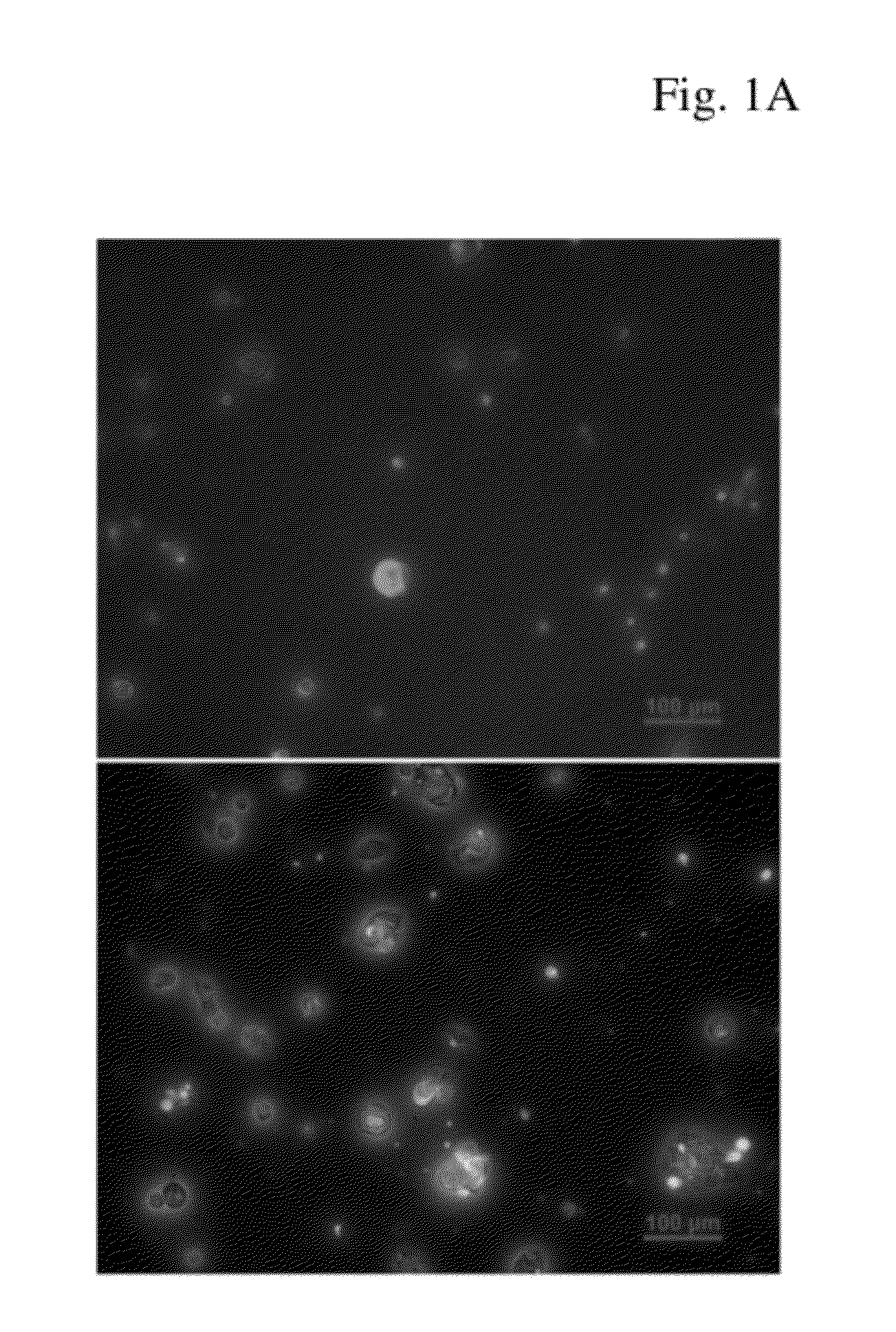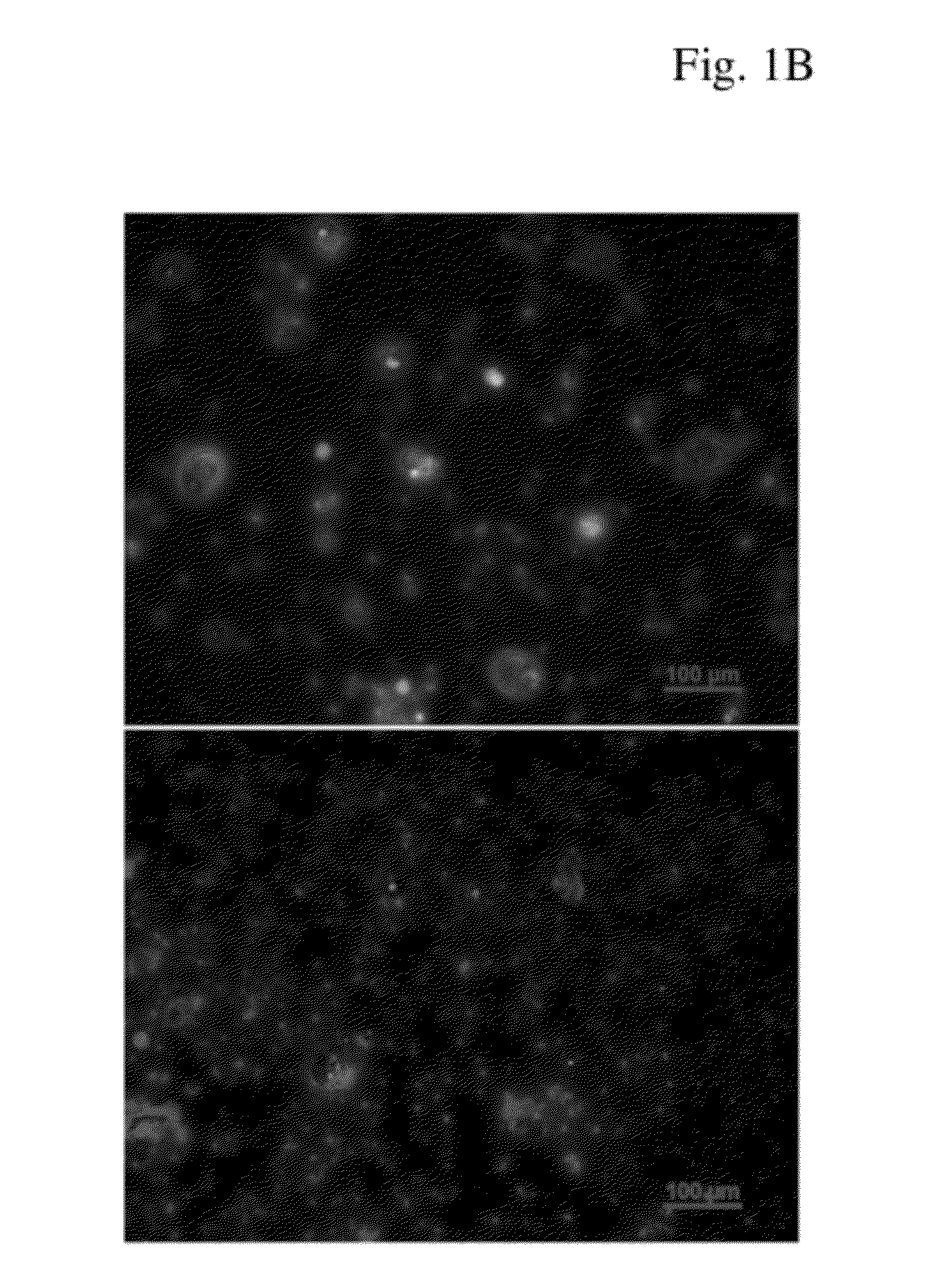Composite magnetic nanoparticle drug delivery system
a magnetic nanoparticle and drug delivery technology, applied in the field of drug delivery systems, can solve the problems of inability of known chemotherapies to provide slow-release delivery of pharmaceutical agents to targeted sites such as tumors and inflammation areas, and severe side effects throughout the patient's body
- Summary
- Abstract
- Description
- Claims
- Application Information
AI Technical Summary
Benefits of technology
Problems solved by technology
Method used
Image
Examples
example i
In Vivo Studies of Drug Carrying Magnetic Nanocomposite Particles Via Fluorescent Molecules
[0058]Because novel nanomaterials may have toxic effects, the ideal detection method would employ a well-established and known biocompatible material. 1,6-Diphenyl-1,3,5-hexatriene (DPH) is a commonly used fluorescent dye used in assessment of cell membranes. The molecule is hydrophobic in nature, and has emission maximum at 428 nm and lower maxima at 452 and 405 nm in phosphate buffer / Sodium Dodecyl Sulfate pH 7.0. It is shown in this example that encapsulations of the fluorescent molecule in the polymeric nanoparticles leaves a footprint that may be used to identify where the biodegradable delivery system has been.
Materials and Methods
[0059]An oil-in-oil emulsion / solvent evaporation technique was used to fabricate magnetic nanocomposite spheres. This evaporation technique consists of two phases including aqueous phase and oil phase. Delivery efficiency and therapeutic effects of an albumin-r...
example ii
Magnetic Targeted Drug Delivery System for Rheumatoid Arthritis
[0070]A magnetic targeted drug delivery system for rheumatoid arthritis consists of an FDA approved therapeutic agent, magnetic nanoparticles, a biocompatible and biodegradable polymer and a biological targeting component combined using an oil-in-oil emulsion / solvent evaporation technique. A two-phase polymeric drug delivery system targets the drug carrying nanocomposite particles to the joints of RA patients.
Materials and Methods
[0071]Composite nanoparticles were formed using the oil-in-oil emulsion / solvent evaporation procedure described in Example I in which a first phase (consisting of the key components of the spheres) was added to a second phase (consisting of paraffin oil and a surfactant) in the presence of a rotating blade. As shown in FIG. 7, the black magnetite nanoparticles which formed had a diameter of approximately 5-15 nm.
TABLE 1Batches With Varying Weight Percentages of Albumin and PLGAMagnetic Nanoparti...
example iii
[0084]This study involves fabrication of biodegradable nanocomposite particles for drug delivery purposes. The particles were then characterized to determine their size distribution, morphology and magnetic properties using to determine their size distribution, morphology, and magnetic properties using scanning electron microscopy (SEM), transmission electron microscopy (TEM), dynamic laser light scattering (DLLS), and a vibrating sample magnetometer (VSM).
Materials and Methods
[0085]Poly(lactic-co-glycolic acid) (PLGA) was embedded with magnetic nanoparticles (MNPs), human serum albumin and Methotrexate (MTX) using the oil-in-oil emulsion / solvent evaporation technique described in Example I. Magnetite nanoparticles with an average diameter of 10 nm as shown in FIG. 15 (left Panel) were prepared using a chemical co-precipitation technique where MNP and MTX concentrations in PLGA were 5%. Six samples (1AB, 2AB, 3AB, 4AB, 5AB and 6AB) with different albumin and PLGA contents were prepa...
PUM
| Property | Measurement | Unit |
|---|---|---|
| diameter | aaaaa | aaaaa |
| diameter | aaaaa | aaaaa |
| diameter | aaaaa | aaaaa |
Abstract
Description
Claims
Application Information
 Login to View More
Login to View More - R&D
- Intellectual Property
- Life Sciences
- Materials
- Tech Scout
- Unparalleled Data Quality
- Higher Quality Content
- 60% Fewer Hallucinations
Browse by: Latest US Patents, China's latest patents, Technical Efficacy Thesaurus, Application Domain, Technology Topic, Popular Technical Reports.
© 2025 PatSnap. All rights reserved.Legal|Privacy policy|Modern Slavery Act Transparency Statement|Sitemap|About US| Contact US: help@patsnap.com



